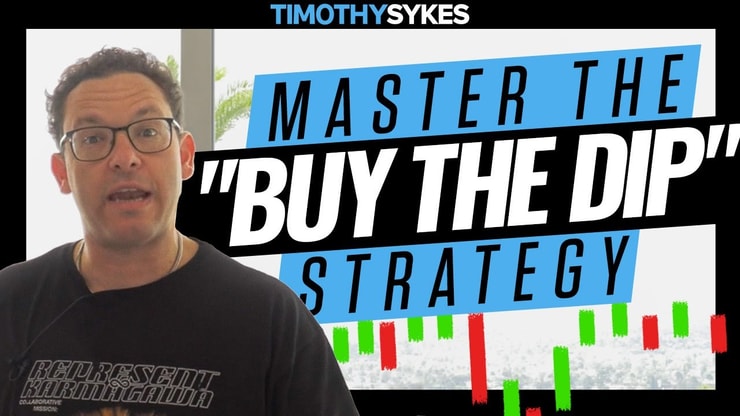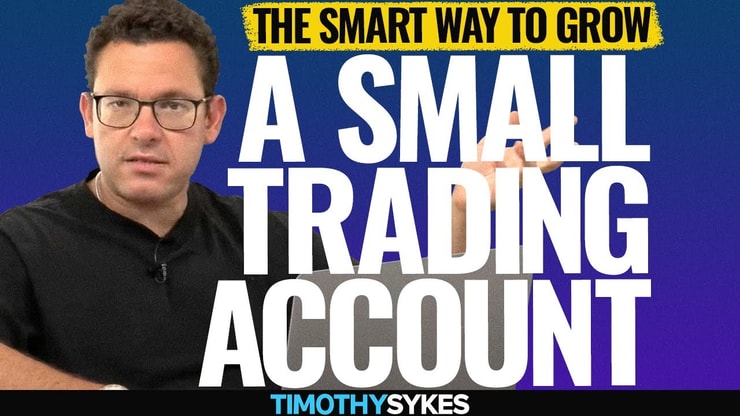A value stock is stock in a company that the market has undervalued for one reason or another. Value investors look for companies with strong fundamentals, whose stock price doesn’t fully capture some part of their performance — like sales, revenue, or dividends. The belief is that share prices will approach these other valuations, and translate into positive results for their investors.
Sorry, I don’t buy it. Even though the stock market often runs on a mob mentality, and can overlook hard data in favor of potential, that to me is missing the point…
As Brian Shannon says, “Only price pays.” There is no such thing as a discount in the market — upcoming products, interest rates, and industry potential are already priced in. If something changes, Wall Street will catch it sooner rather than later.
But that isn’t my biggest issue with this form of investment. My issue is with investments themselves.
The average blue chip stock in your portfolio is probably worth a 10% annual return on your investment. That’s good for big accounts, not so good if you’re a small account trader with debt on your credit cards.
It’s still a good idea to learn more about the markets — read on for today’s lesson!
Table of Contents
- 1 What Is a Value Stock?
- 2 Pros and Cons of Value Stocks
- 3 My Top 5 Value Stocks to Buy Now
- 3.1 1. Medical Properties Trust (NYSE: MPW) — The Value Trap Value Stock
- 3.2 2. JPMorgan Chase & Co. (NYSE: JPM) — The Bank Panic Value Stock
- 3.3 3. Target Corp (NYSE: TGT) — The BBBY Beneficiary Value Stock
- 3.4 4. Verizon Communications Inc. (NYSE: VZ) — The Value Stock Due for a Bounce
- 3.5 5. Alphabet Inc. (NASDAQ: GOOGL) — The Post-Split Value Stock
- 4 How Do You Find Value Stocks?
- 5 Why Trade Value Stocks?
- 6 Key Takeaways
What Is a Value Stock?

A value stock is stock in a company that is “cheap” relative to its fundamentals, such as earnings and dividends. Value investors talk about things like intrinsic value.
They contrast with growth stocks, which trade on flashier catalysts like news, influential shareholders taking a large position, and hot industries.
The catalysts above both drive and reflect growth. A value investor’s research aims to uncover opportunity in stocks without any of those slam-dunk factors.
They might zero in on the addition of services, new customers, and income streams. Or they might focus on challenges such as a recession, inflation, or pandemic-related disruptions. They might even look at world events, mortgage rates, and the overall health of the economy.
Value stocks are typically found on the NYSE or Nasdaq, in businesses with cash reserves, good liquidity, or maybe real estate holdings. They can be securities or ETFs.
Value stocks don’t have to be boring. The r/WallStreetBets post that started the GameStop run was a value stock thesis. And we all know how that turned out.
LOL HILARIOUSSSSSS $GME #wallstreetbets #gamestonk #RedditTrading #GameStop https://t.co/Ur610ME8a2
— Timothy Sykes (@timothysykes) January 29, 2021
Understanding the different types of stocks is crucial in making informed investment decisions. While we’re discussing value stocks here, it’s equally important to understand the landscape of the stock market as a whole. Check out my comprehensive guide on the Different Types of Stocks to broaden your knowledge and become a more versatile trader.
Pros and Cons of Value Stocks

To me, the pros and cons of value stocks depend on the opinions of those doing the analysis.
There is plenty of debate on this — that’s OK. The following is just one trader’s opinion:
- Pro: Value stocks have lower volatility.
- Con: You want volatility when you’re trading stocks. Volatility is the quality that lets traders capitalize on a stock’s price swings.
- Pro: Value stocks have the potential for long-term gains.
- Con: To realize this potential, you need to ‘hold and hope’ that your shares go up in price. Stocks are not CDs. All stocks have real risk. Hold and hope is not a strategy.
My Top 5 Value Stocks to Buy Now
These are the value stocks I’m watching — and the reasons I probably won’t trade them:
- (NYSE: MPW) — Medical Properties Trust — The Value Trap Value Stock
- (NYSE: JPM) — JPMorgan Chase & Co. — The Bank Panic Value Stock
- (NYSE: TGT) — Target Corp — The BBBY Beneficiary Value Stock
- (NYSE: VZ) — Verizon Communications Inc. — The Value Stock Due for a Bounce
- (NASDAQ: GOOGL) — Alphabet Inc. — The Post-Split Value Stock
Before you send in your orders, take note: I have NO plans to trade these stocks unless they fit my preferred setups. This is only a watchlist.
The best traders watch more than they trade. That’s what I’m trying to model here. Pay attention to the work that goes in, not the picks that come out.
Subscribe to my NO-COST weekly stock watchlist here!
While we’re discussing value stocks, it’s also worth keeping an eye on other sectors that show promise. For instance, the consumer discretionary sector often houses companies with strong growth potential. Check out my list of the Top 6 Consumer Discretionary Stocks for some exciting trading opportunities.
1. Medical Properties Trust (NYSE: MPW) — The Value Trap Value Stock
My first value stock watch is Medical Properties Trust (NYSE: MPW)…
I’m watching the analysts who declared MPW undervalued turn on it one by one.
It seems that MPW is another victim of rising interest rates. And bad management. Basically, the things that made its shares tank in the first place.
It looked cheap in 2022, when research firm Hedgeye published its bear thesis. MPW is now trading at less than half of its price then.
It’s still got an outsized dividend of 14%. It’s still trading at a discount to its sector.
There’s a reason that the stock is this cheap.
2. JPMorgan Chase & Co. (NYSE: JPM) — The Bank Panic Value Stock
My second value stock pick is JPMorgan Chase & Co. (NYSE: JPM).
My Trading Challenge students know that I’ve been watching the stocks hurt by the banking panic…
I traded SVB Financial Group (OTCPK: SIVBQ) for more than $3k as it bounced its way down to penny stock land. These super cheap stocks that some brokers won’t even let you trade are my bread and butter.
I like them because they’re cheap. Bigger investors stay away, and these stocks tend to follow the patterns I like to trade. Like the panic dip buy…
JPM is a pricier stock. It bounced off its lows, but only by 2–3% at a go. SIVBQ had some 100%-plus bounces in there.
For JPM, the real bounce came in the typical way — the market’s response to earnings.
SIVBQ is stock in a bankrupt company. It’s apples to oranges comparing it to JPM…
But JPM wasn’t a sure thing, even before its April bounce. If it was, everyone would have bought in already.
3. Target Corp (NYSE: TGT) — The BBBY Beneficiary Value Stock
My third value stock to watch is Target Corp (NYSE: TGT)…
Except I’m much more interested in how it will benefit from the imminent demise of Bed Bath & Beyond Inc. (NASDAQ: BBBY).
BBBY is the meme play that never made it over the hump…
It spiked several times in the hot market of 2020–2021. For a few days in 2022, it looked like the last meme stock standing…
Then meme stock legend Ryan Cohen sold his stake, stopping BBBY from going supernova. It’s all been downhill from there.
Why should you care? Analysts have been predicting BBBY’s loss will be Target’s gain.
It will have better access to brands — which may lead to better supply deals. And Jim Cramer says that Target has the most stores adjacent to Bed Bath & Beyonds — which should mean increased traffic for the last box store standing.
I don’t care about that. I’ll be watching to see if some of the BBBY chasers jump to TGT.
4. Verizon Communications Inc. (NYSE: VZ) — The Value Stock Due for a Bounce
My fourth value stock pick is Verizon Communications Inc. (NYSE: VZ).
I know I wrote that it’s due for a bounce…
Keep in mind that analysts have been saying this ever since it slid to 5-year lows in July 2022.
Now it’s at 10-year lows, and the price-to-earnings (P/E ratio) on each share just keeps getting more attractive. So does the dividend, which now measures 7%.
Observers have written that Verizon is being overly punished for losing market share to AT&T (NYSE: T), and getting sympathy punished for AT&T’s crises.
That all may be true, and VZ might actually bounce one day. But I’d rather wait till that day comes than trade it in advance.
I don’t predict the market, I react to it.
To be fair, VZ has shown signs of life in 2023. It’s had two multi-week runs of 10% each.
But I’d rather trade penny stocks for a 10% return in minutes.
5. Alphabet Inc. (NASDAQ: GOOGL) — The Post-Split Value Stock
My fifth value stock to watch is Alphabet Inc. (NASDAQ: GOOGL).
GOOGL had a 20-to-1 split in July 2022. The idea was to open the overweight stock to retail traders who might not trade it at a $2,200 price point.
It went on a 10% run after the split. Then it continued the slide that saw it lose 39% of its value in 2022…
The news hasn’t been good. Alphabet is revoking company laptops and conducting layoffs. Its AI chatbot, Bard, made a factual error in its own promotional video!
Still, I think GOOGL is a good bet to continue its 2023 recovery. And it isn’t because I’m reading the tea leaves on its future…
Its chart looks good. It always has exciting news coming up. That’s really all it takes.
How Do You Find Value Stocks?

You find value stocks by using a top-shelf stock scanner like StocksToTrade.
StocksToTrade is designed by and for traders — I even had a hand in it myself! Its versatility makes it so it can fit any trading strategy. It has loads of useful tools, like a Breaking News add-on that will get you to important news first, and numerous technical indicators to help your analysis.
Sign up for a 14-day trial to StocksToTrade and Breaking News today — only $17!
When searching for value stocks, one of the key factors to consider is the market capitalization of a company. Market cap can give you a quick snapshot of a company’s size and its potential for growth or stability. Learn more about the importance of Market Cap in my detailed guide.
Why Trade Value Stocks?
When you react instead of trying to predict, trading gets simpler.
Traders who learn to react focus on preparation. They put their time into building watchlists like this one — so when the moment comes, they’ll be ready.
If a stock makes it to your watchlist then sets up for a trade, you’ll know why to trade it…
You trade it because it’s a high-potential play, not a gamble.
I trade like a coward, and I’m proud of that. If you trade scared, you won’t bet on trades working out. You’ll put in the work to reach your goal or keep your loss manageable.
If you’re on the fence about your trading strategy, check out my guides to high-growth stocks, dividend-paying stocks, and large-cap stocks.
Key Takeaways

Value stocks are part of the traditional market wisdom I love to question.
Just because I question their value doesn’t mean you need to listen…
What it does mean is that you should have your own reasons why. If you’re blindly following someone else’s advice, the odds of you blowing up your account are far greater.
If you want to learn more about the rules I teach, apply for my Trading Challenge. We don’t take everyone. But if you’re serious about becoming a better trader, you might make the cut.
Apply to my Trading Challenge here.
Do you trade value stocks? Let me know in the comments!





Leave a reply